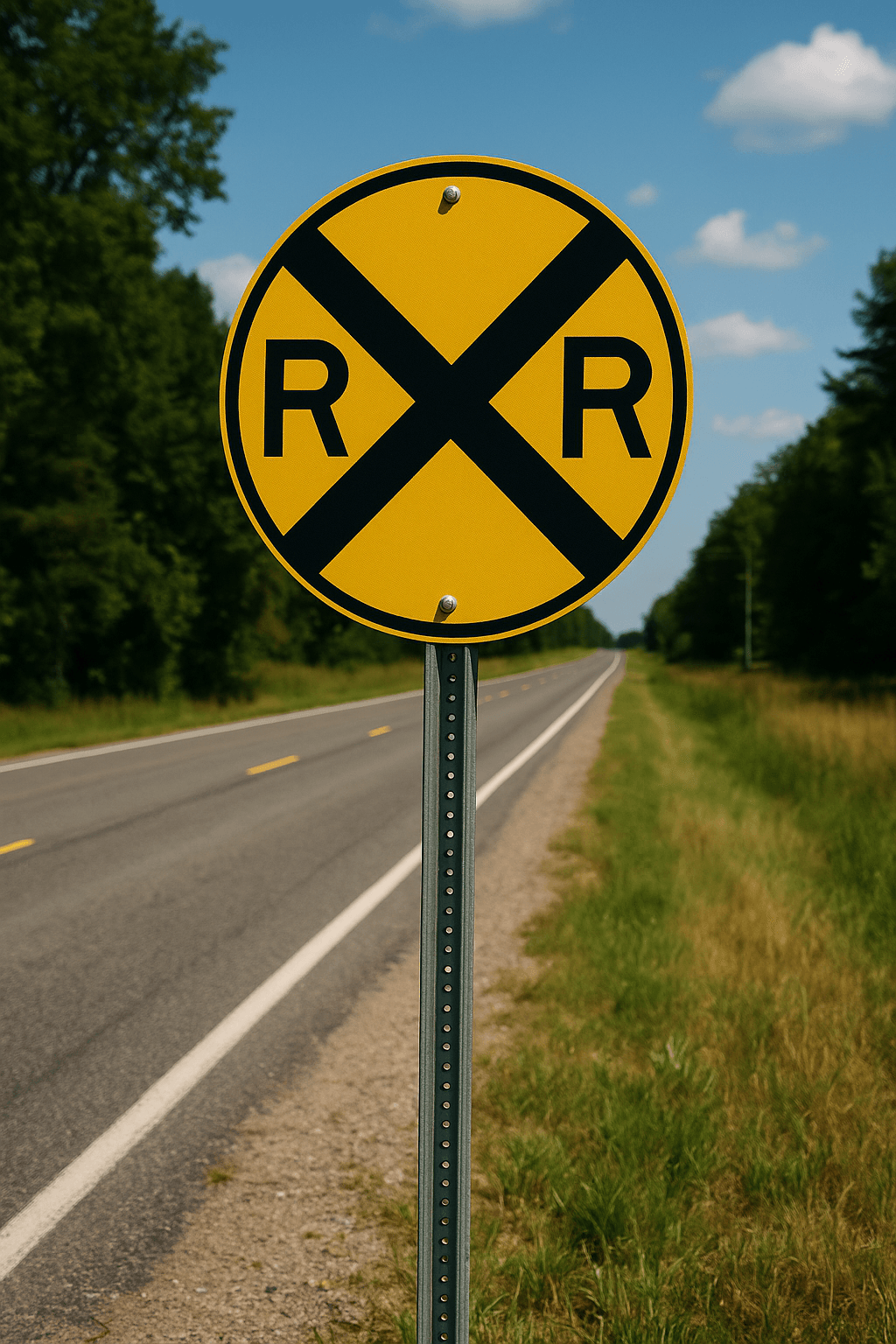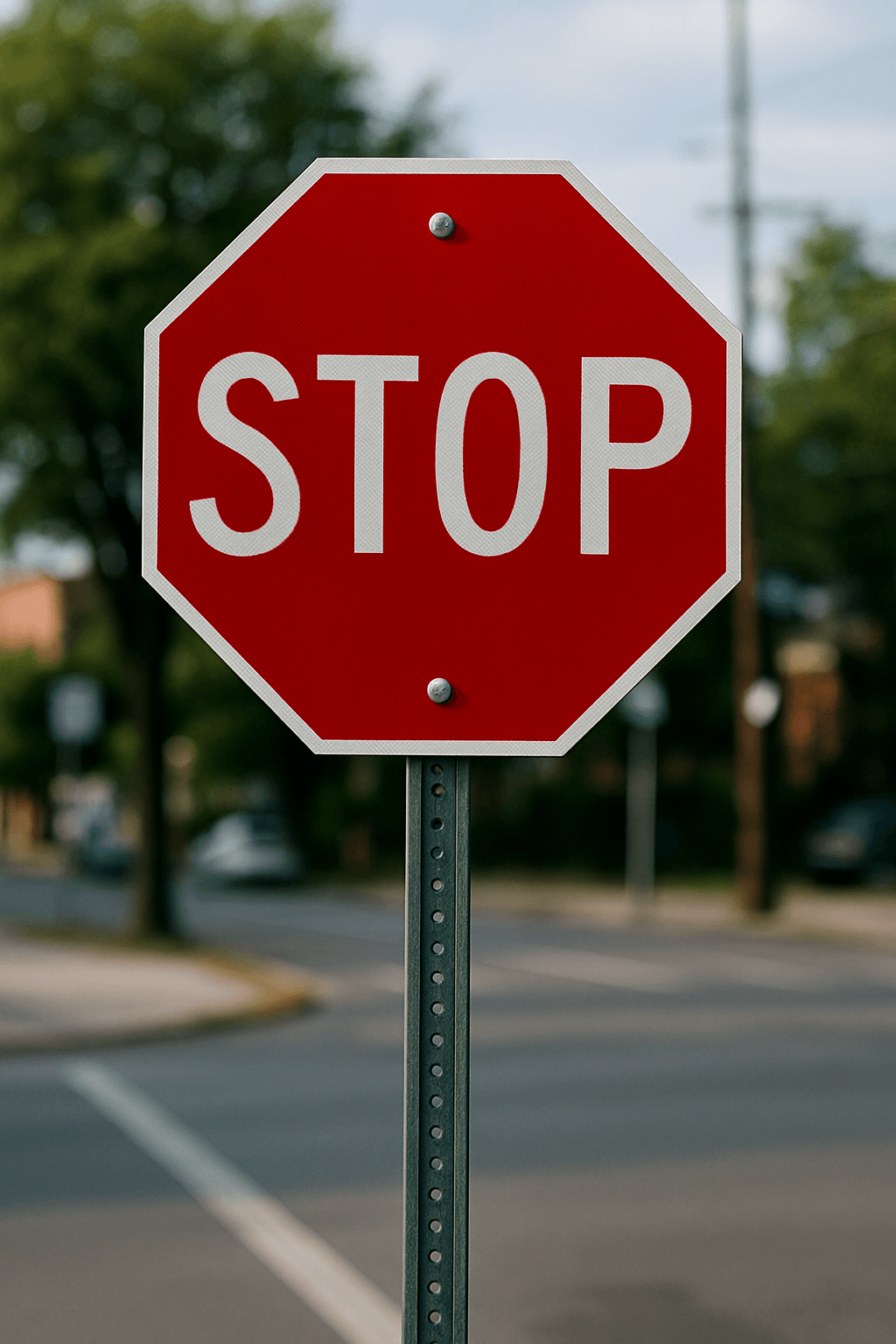Railroad Crossing Sign: Simple Guide To A Tricky Test Question
Road Signs Guide to the Railroad Crossing Sign for the DMV Written Test

Getting ready for the DMV test means juggling a lot of signs in your head. The railroad crossing sign is one of those that looks easy, but the exam loves to twist it a bit. If you understand where it comes from and what it really wants you to do, it becomes a free point on the test and a real life saver on the road.
Railroad Crossing Sign Meaning and Why It Looks So Different
The round yellow railroad crossing sign tells you one thing:
train tracks are ahead, get ready to slow down and check for trains.
It is a warning sign, not a decoration. When you see it you should
- ease off the gas
- scan for tracks
- be ready to stop
Trains always win in any collision. They cannot swerve, they need a huge distance to stop, and they always have the right of way. Your job as a driver is to notice this sign early enough so you are not surprised when the tracks suddenly appear in front of you.
At the actual tracks you will usually see a white X shaped sign that says RAILROAD CROSSING. That is called a crossbuck. Sometimes you also get flashing red lights or a gate that comes down. Sometimes there is nothing but the crossbuck itself. On the test they might show any of these and still ask about the same idea. If a train is coming, you stop and wait.
What You Really Need To Remember For The DMV Test
If you want to keep it simple for the exam, lock in these points:
- Round yellow sign with a black X and two Rs means tracks ahead.
- Slow down and be ready to stop.
- At the crossing, a train always has the right of way.
- Stop before the stop line. If there is no line, before the gate or before the tracks.
- Never stop on the tracks. Never try to beat the train.
The question on the test might not be dramatic. It might just ask what this sign means, when you should stop, or who has the right of way at a railroad crossing. If you picture the real life situation instead of only memorizing words, the correct answer usually jumps out at you.
How This Sign Can Actually Help You Study Faster
When you are cramming signs it is easy to feel like you are just memorizing shapes. The railroad crossing sign is a good one to use as a mental anchor. It has a unique shape, a strong reason behind it, and a clear action you must take.
If you train yourself to always think “slow, look, listen” every time you see that circle with the X and the Rs, you will remember it on test day without effort. One sign fully understood beats ten signs half memorized.
You are not just passing a quiz. You are learning how to stay out of the way of a hundred ton train. The DMV likes that, and so should you.
A Short History Of The Railroad Crossing Sign
Railroad warnings in the United States existed before most road signs even showed up. Trains were already crisscrossing the country while cars were still rare. Early railroad signs were simple wooden boards nailed in an X near the tracks. No color standards, no fixed shape, just “here be trains, be careful.”
As cars became more common in the early 1900s, crashes at crossings became a serious problem. Drivers needed more time to spot a crossing before it was too late. That is where the round yellow railroad crossing sign came in.
The circle shape was not random. Most warning signs at the time were diamond shaped. The round sign instantly stood out from the crowd and said “this is not just any hazard, this is a train.” The yellow background with black letters and the big X with two R letters made it easy to read even from far away or in bad weather.
Over time federal standards locked this design in, so today you see basically the same railroad crossing sign anywhere you drive in the US. That is great news for the exam. Once you know it, you know it for every state test.
Other U.S. Road Signs
© 2025 Drivio DMV Practice Tests
